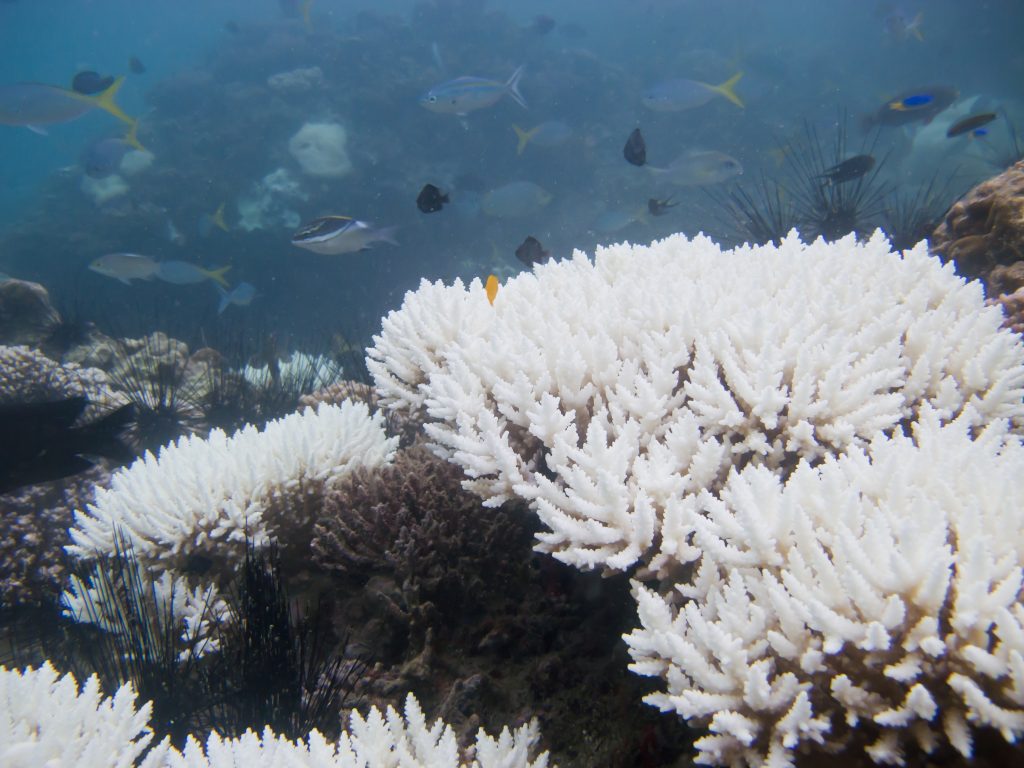Blistering Ocean Temps Break Records


The water temperatures of the world’s oceans are rapidly on the rise. The result of elevating atmospheric carbon dioxide levels that are causing a host of extreme weather conditions the world over. Ocean-temperature rise is accelerating at unprecedented rates with a host of serious possible ramifications in its wake.
By Eric Herman
Temperatures in the world’s oceans are breaking records, registering unprecedented highs for the past two months in a surge that has led many scientists to declare that the Earth is reaching “uncharted territory.”
Although generally attributed to climate change, the rapid acceleration of ocean temperatures is so extreme, it’s left scientists scratching their heads. Data collated by the US National Oceanic and Atmospheric Administration (NOAA) collected via network of satellites and buoys, has shown temperatures higher than in any previous year dating back to 1981 when gathering and analyzing global ocean temperature data began.
Not only are the temps registering at record levels, the sudden surge is atypical of annual cycles. It’s generally accepted that the world is on the brink of an El Niño weather event; a weather system that forms in the Pacific Ocean with ripple effects the world over. What’s puzzling scientists is the system has yet to fully develop, meaning the recent rapid heating is unexplainable by way of historic oscillations. In fact, it’s happening at a time of year when ocean temperatures are normally in decline from their usual March and April peak levels.
As is typically the case with climate-change related phenomena, the impact is uneven and is being felt far more acutely in some areas compared to others. As an example, a sudden marine heat wave off the coast of Florida has sent water temperatures soaring to unprecedented highs, reaching the high 90s in many areas.
Among a host of potential heat-related problems, the recent high temperatures are threatening to cause one of the most severe coral bleaching events the state has ever seen. “We didn’t expect this heating to happen so early in the year and to be so extreme,” Derek Manzello, a coordinator at the National Oceanic and Atmospheric Administration’s Coral Reef Watch, told CNN. “This appears to be unprecedented in our records.”
He further explained that the sweltering temperatures – close to 97 degrees Fahrenheit in some areas – are more than just another alarming climate record. Temperatures that are too hot for too long cause coral to bleach, turning “a ghastly white as they expel their algal food source and slowly starve to death.”

According to biologists, warming of 1 degree Celsius, or 2 to 3 degrees Fahrenheit, beyond the reef’s normal highest temperature to trigger heat stress that leads to bleaching, according to Manzello. The sea surface temperatures around Florida are more than 2 degrees Celsius above normal and have been for several weeks.
Ocean temperatures around Florida usually get hotter as the summer progresses, and don’t reach their peak until late August into September, Manzello said, meaning ocean temperatures will almost certainly rise further.
That would mean “significant and severe” bleaching will start in late July, and the coral could start to die altogether within a month after that, he said.
“It still remains to be seen if this event is going to be more or less severe than previous events,” Manzello said. “However, all of the evidence right now is pointing to the fact that it’s going to be one of the more severe events we’ve seen.”
The bleaching is already happening, especially in the Florida Keys. That’s where the state’s largest and ecologically most important reefs exist, a population that includes more than 6,000 individual reefs. Already, researchers have recorded 11 partial bleaching events and expect that number to grow rapidly over the increasing heat of the summer.
According to a study published by NOAA last year, coral disease and bleaching had already impacted nearly three quarters of Florida’s coral reefs.
Of course, the devastating effects of ocean temperature rise reach far beyond the Sunshine State. As warmer water expands and takes up more space at higher temperatures, it accelerates rising sea levels and melting polar ice caps, further driving up sea levels. And those same high temps have negative effects across the spectrum of marine ecosystems. Combined with ocean acidification, as well as rising levels of micro-plastics and other forms of pollution, many researchers worry that the uncharted waters we’re entering will be defined by the decline of vast regions of marine life, up and down the food chain, at varying degrees of severity around the globe.
Recent observations have revealed an array of symptoms of ocean warming. Coldwater currents flowing from Antarctica are showing signs of retreating, a process that might have dramatic impacts on weather patterns and habitats for species at the bottom of the food chain. And, the behavior of sharks is being impacted as evidence in their feeding, mating and migratory habits and patterns.
Climate scientists recently warned that preliminary data from NOAA revealed that ocean’s surfaces have averaged 21.1C, exceeding the previous high of 21C set in 2016, with the greatest increases yet to materialize.
When and where it will peak is currently anyone’s guess.
Opening graphic by Maderla | Shutterstock, bleached coral image by Ekkapan Poddomrong | Shutterstock









